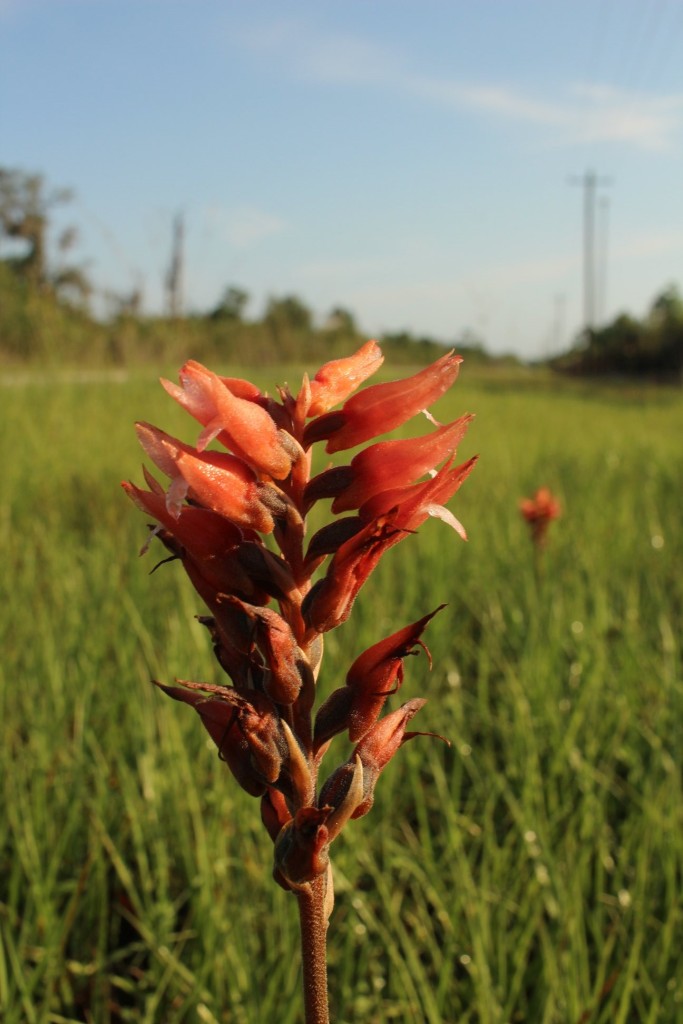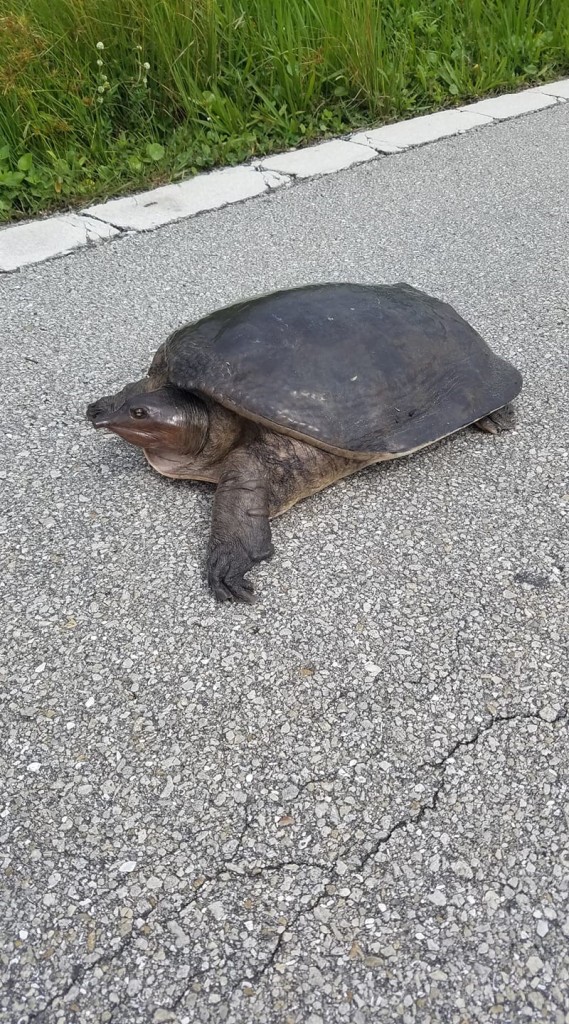
Photo Credit: Scott G. Ward.
Author: Scott Ward
Driving along Old State Route 8 or State Route 70, most drivers must keep an eye on the bevy of oncoming semi-trucks and hurried SUVs and sedans. As someone who uses these roads quite often, Plant Ecology research assistant Scott Ward is wary of taking his eyes off oncoming traffic, fearful for if they may swerve towards his own lane. As a botanist; however, his eyes can’t help but sway to the all-too-alluring band of roadside plant communities found along both roads. Like many paved pathways in south-central Florida, the stretch of Old SR8 running southward towards the entrance of Archbold Biological Station from its junction with SR70 is prone to repeated rounds of mechanical disturbance, or as many might call it: mowing. During the initial quarantine period in the spring months of 2020, these roadside strips went un-mowed for an extended period of time, allowing plant species to grow free and unabated. As Ward and other Archbold employees began to work primarily from home in the early response to COVID-19, visits to the Station were less frequent than before. Upon intermittent returns to the Station, Ward noticed that the diversity (and height!) of vegetation along Old SR8 had dramatically increased. Ward remarked, “Bright colors assembled along the otherwise predominantly non-native, grass-dominated roadside strips—from showy native species such as dayflower (Commelina erecta), cottonweed (Froelichia floridana), and Florida alicia (Chapmannia floridana), the latter of which is endemic to (growing here and nowhere else) Florida.” Sometimes even, these disturbed roadside assemblages can give way to more interesting elements, such as the state-threatened Leafless Beak Orchid (Sacoila lanceolata, pictured), observed in flower along Old SR8, north of Archbold’s Red Hill entrance. The Leafless Beak Orchid grows at the northern end of its range here in peninsular Florida, but can be found elsewhere across Central and South America. It is a particularly showy species of orchid, and can grow in a variety of disturbed habitats such as grasslands and pastures, but never seems to be readily abundant when found. So while these disturbed roadsides often favor noxious weeds and aggressive grasses (see The Bad Seed: A Tangled Tale, archboldedublog.org, published 23 December 2019), these same areas often provide refuge to rare species that otherwise have diminished native habitat or are at the fringes of their more widespread range. Would passers-by have seen this orchid blooming had the regular-scheduled mowing frequency been in place? Ward notes, “This pattern is of course not only unique to plants, as many reptile and amphibian species like to use warm road surfaces as spots to soak up sun and gather body heat. In fact, shortly after witnessing this blooming orchid, I observed a Florida softshell turtle (Apalone ferox) thermo-regulating during a somewhat cloudy day along Old SR8 (pictured). Fortunately, no oncoming traffic was present at the time so I was able to safely pull over and escort this unwitting individual off the road.” Thus, while roadside areas can often be prone to periods of intense disturbance, their ecology can be quite dynamic, giving way to sometimes unexpected levels of life.
Most people cannot conceive of a world in which they let their own lawns or neighborhood roadsides grow un-chopped by the relentless blades of the ever-present mower. However, the few seeking a change from their typical low-cut, Bahia grass reality may allow their yards to grow taller, more natural, and more diverse. They may even receive some surprise visits from wildlife that prefer denser cover of herbaceous vegetation.
“I still remember my first visit to Apalachicola National Forest in the spring of 2018,” Scott comments, “The scarcely-mowed margins of State Route 65 displayed incredible native wildflower diversity, which colored the roadside ditches with a rainbow assortment of plant vibrancy. Here is an area of Florida where infrequent road-side mowing actually promotes botanical diversity and even provides habitat refuge to a number of rare plants.”
Roads serve a primary function, to transport us from one point to another in a safe and efficient manner. Scott concluded, “When so many plant and animal species have been relegated to increasingly smaller pockets of their once abundant habitat, we must consider the role that fragmented habitats, and the roads that run through them, serve in preserving life. Changing the timing of mowing to after flowering season, and reducing the frequency of mowing on roadside verges, can have beneficial effects for wild plants. Breaking from our traditional expectations of what roadsides should look like—mowed, sterile, and uniform—means we may accept a world more hospitable for biodiversity.”
Dr. Swain, Archbold Director added, “In Texas, native roadside wildflowers have become a beloved feature. Lady Bird Johnson saw roadside protection and restoration as an opportunity to bring rich plant and animal biodiversity to what might otherwise be unhealthy roadsides lined with billboards and invasive species. The Texas Highway Beautification Act, celebrating its 50th anniversary in 2015, has been her signature achievement toward promoting roadside conservation.”
Dr. Swain continued, “In Florida, the Department of Transportation has a Wildflower and Natural Areas Program. The core goals of the program are to improve aesthetics and driver safety while lowering maintenance costs, and FDOT has increasingly emphasized the importance of preserving naturally occurring stands of wildflowers on Florida’s 12,000 miles of state-maintained roads. There is more information on ‘Preserving Natural Stands’ on the FDOT web site, showing how protecting naturally occurring native flora will increase habitat for pollinators while safely reducing the cost of managing roadside vegetation.”

